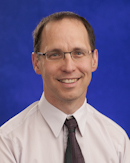When I arrived in Lethbridge in the summer of 1995, my first job was to write an NSERC research grant proposal. This proposal used delay systems, a theme I had first explored in detail while I was a postdoc at McGill, as a connecting theme. It’s interesting to go back to this first proposal, because some of the ideas are recognizable in my current research program, but others were dropped long ago. It included a proposal to develop a detailed model of the lac operon, something I never quite got around to doing, but which is clearly related to my current research interests in gene expression. There was a proposal to work on the equivalence between various types of differential equations, including master equations, which I’m still working on. There were also some ideas for stochastic optimizers, which led to some work on the structures of ion clusters,1 but which I didn’t pursue for long.
So what did I busy myself with? My very first paper in Lethbridge was on competitive inhibition oscillations,2 a phenomenon I had first discovered in the final stages of my Ph.D. This line of thought eventually led to the discovery of sustained stochastic oscillations in this system many years later.3
I’m not going to go through all the work I’ve done since those early years, so maybe I’ll just mention a few major themes that emerged over time, and take the opportunity to formulate a bit of advice to young scientists.
I continued to be interested in model reduction, a topic I continue to work on to this day. After leaving Toronto, I had thought that I would stop working on these problems. I wasn’t sure that I had all that much more to say about the theory of slow invariant manifolds. But colleagues in the field encouraged me to keep working on these problems, and from time to time I had some new idea that I thought would contribute something to the field. I am no longer under any illusion that I’m going to stop working on these problems anytime soon. What is the lesson to young scientists here? If you work on a sufficiently interesting set of problems during your Ph.D., this work is likely to follow you throughout your career, and that’s not a bad thing.
While I was finishing my Ph.D., I remember having a talk with Ray Kapral in which I said, with the certainty that only a young, inexperienced scientist can muster, that the problems involved in modelling chemical systems with ordinary differential equations were sufficient to keep me occupied, and that I would never (I actually remember using this word) work on partial differential equation or stochastic models. By 2002, I was studying reaction-diffusion (partial differential equation) models with my then postdoc, Jichang Wang. By 2004, I was working on stochastic models with Rui Zhu, also a postdoc at the time. In fact, most of my research effort is currently directed to stochastic systems. It was silly of me to say I would never work in one modelling framework or another. What I had the wisdom to do as I matured was to pick the correct modelling paradigm at the appropriate moment to tackle the problems I wanted to solve.
One of the things that, I think, has kept my research program relevant and vital over the years is that we’ve done a lot of different things: in addition to the topics mentioned above, there were projects on dynamical systems with stochastic switching, on stochastic modelling of gene expression, on photosynthesis, and on graph-theoretical approaches to bifurcation theory, to name just a few. Most of these topics connect to each other in some way, or at least they do in my head.
Looking back on my first 50 papers, much as it’s fun to think about the research, it’s the people that stand out. I’ve worked with many fine supervisors, colleagues, postdocs and students. I have learned something from each and every one of them. In fact, if I have one piece of advice for young scientists, it’s to find good people to work with, and to pay attention to what they do and how they do it. You can’t necessarily do things exactly the same way as someone else does, but you ought to be able to derive some general lessons you can use to guide your own research career and interactions with other scientists.
Be brave in choosing research topics. Work hard. Find good people to work with. I can’t guarantee that doing these things will lead to success, but not doing them will, at best, lead to mediocrity.
1Richard A. Beekman, Marc R. Roussel and P. J. Wilson (1999) Equilibrium configurations of systems of trapped ions. Phys. Rev. A 59, 503–511. Taunia L.L. Closson and Marc R. Roussel (2009) The flattening phase transition in systems of trapped ions. Can. J. Chem. 87, 1425–1435.
2Lan G. Ngo and Marc R. Roussel (1997) A new class of biochemical oscillator models based on competitive binding. Eur. J. Biochem. 245, 182–190.
3Kevin L. Davis and Marc R. Roussel (2006) Optimal observability of sustained stochastic competitive inhibition oscillations at organellar volumes. FEBS J. 273, 84–95.
